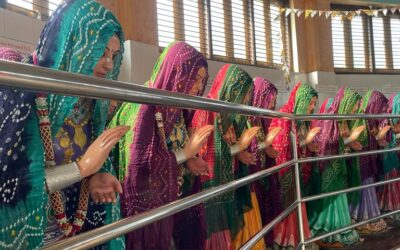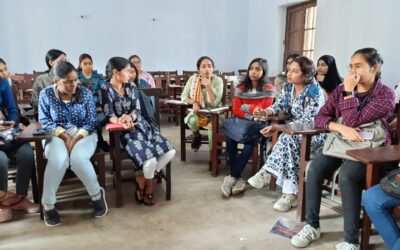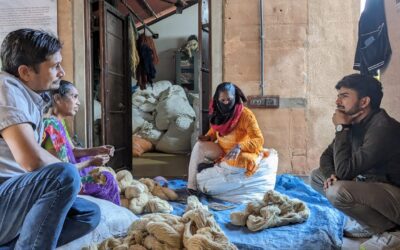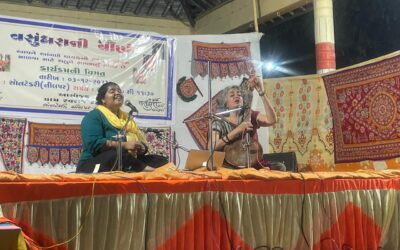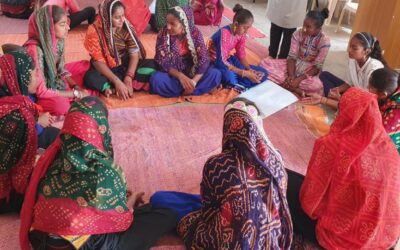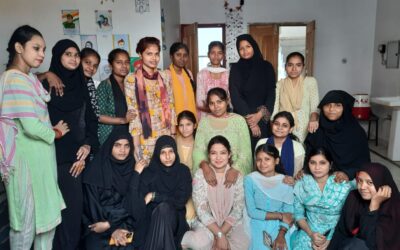Through different customs and practices of two villages in Kutch, this article aims to explore the complex traditions of rural Kutch.
404_
Oops, you’re beyond the borders. But you can search for what you had in mind or browse our other blogs.
Dairy and Plastic: Rethinking Our Relationship
Domestication Dairy and plastic: Uneasy Partnership In our everyday lives, we often overlook the rich histories of the animals that coexist with us. The evolutionary link between dogs and wolves is widely recognized,but the lesser-known history of cattle domestication...
Sounds of Rapar
Rapar is a taluka of Bhuj District in Gujarat. It is an agrarian economy primarily but currently it is turning into a mining region.
We Live In Dilemmas
One brisk evening during my fellowship mid-point meet/training in Delhi , we visited the majestic Qutub Minar, a UNESCO World Heritage Site. As I stepped into the vast courtyard, the towering monument, stole my breath away. I marveled at its engineering, feeling...
कुछ गुफ्तगू मानसिक स्वास्थ्य पर
इस पॉडकास्ट के जरिए, मैंने और मेरी साथी सहेली 'समरीन' ने जिंदगी से जुड़े कुछ अनुभव साझा किए हैं। हमने हमारे जीवन में गुज़ारे हुए पलों का जिक्र इसमें किया है। हम सभी की बीती जिंदगी में कुछ पलों की, कहीं न कहीं गहरी छाप छपी होती है, जिससे उभर पाना हमारे लिए उस वक़्त आसान...
Kaliyar Sharif: A Shrine of Healing
Since I became an India Fellow, I have frequently traveled to Roorkee, Uttarakhand for work. During my visits, I was always fascinated by the nearby places which I wanted to visit and explore. Though I was never able to do so because of the short trip durations and...
Are We Only Talking?
"Chai bolo bhai chai bolo!" "CHAI!", we said together. And then we giggled. The tea vendor smiled too. This was how a conversation between a stranger and I began while travelling in the winters of Rajasthan. The art of initiating and navigating conversations includes...
कार्यक्षेत्र में महिलाओं की संख्या को कैसे बढ़ाया जाये
भारत की कुल आबादी में से आधी आबादी महिलाओं की है, हमारे देश में नारी को भगवान की तरह पूजते हैं और कहा भी गया है, यत्र नारी पूज्यन्ते, रमन्ते तत्र देवताः यानी जहां पर नारी की पूजा होती है वहाँ पर देवता निवास करते हैं। ऐसी सोच वाले हमारे देश में जब महिलाएँ रोजगार के लिए...
Beharda: A Hidden Tale Of Prosperity
Often in history we have seen many of the princely states, cities and villages which were once at the peak of their prosperity turn into ruins. Today I will tell you the story of one such village which was once known for its prosperity but now only a few traces...
Vasundhara Ni Vaani – Kabir Yatra
It was a bright morning. Everyone was busy with their work. At around 11 am I was standing near the main gate of Gram Swaraj Sangh to welcome our first guests-- students and volunteers from Kaushala for Kabir Yatra-- the three day travel music festival. I was very...
Celebrating A New Kind Of Living : Between Anuppur And Pune
After spending my whole life in Pune, I moved to Anuppur last year. It is one of the easternmost districts of Madhya Pradesh bordering Chhattisgarh with a population of 7.5 lakhs as per the 2011 census. This district was formed in 2003, and is mainly a hilly region...
An Imprint Of Culture In Kutch
The costumes of people in rural areas of Kutch, Gujarat are known for their vibrant colours, intricate embroidery, and unique designs. They reflect one-of-its-kind richness in culture and traditional craftsmanship of the region. Both men and women wear locally...
The November Of 2023
I plan my trips well in advance and always leave room for some delay in departure or arrival. This time, I had come to Delhi for India Fellow training, with a similar thought. I reached a day early so that I have a few hours to relax even if the train was delayed....
Common Facility Centre And Wool
A Common Facility Centre (CFC) is a shared physical space for a group of individuals or businesses to conduct mutually beneficial activities. These facilities aim to offer collective spaces in an efficient and cost-effective way for multiple people instead of each...
A Job Still Not Worth Its Salt
Life hasn’t changed much for small-scale salt pan workers known as Agariyas in the Little Rann of Kutch (LRK). It continues to be as harsh and predictable as the landscape. For centuries and generations, from as long as they can remember, it has been the same. These...
मासूम ख़्वाहिशें, अनोखी बंदिशें और घटते आंकड़े
कम्युनिटी सेंटर पर रहना यानी आसपास स्थित समुदायों के सभी खुले-छुपे और छुपाए हुए अंगों को देख पाना है| अगर वे अंग एक नज़र में न भी दिखें तो धीरे-धीरे नजर आ ही जाते हैं| कम्युनिटी सेंटर आखिर है क्या मैं फिलहाल लखनऊ के बरौरा नामक क्षेत्र में 'सद्भावना ट्रस्ट' के...
Going Back To The Good Old Times
"अरे, उन दिनों में हम ज्वार, बाजरा और माल की ही खेती करते थे, और जंगल में बाकी के अनाज ऐसे ही मिल जाते थे। और उन दिनों में हमें कभी भी बीमारी नहीं होती थी, हमारे गांव में बहुत से बुजुर्ग लोग कभी अस्पताल नहीं गए क्योंकि उनको जरूरत ही नहीं पड़ती थी..." - किशन लाल, उम्र...
Embracing Sacred Activism: A Global Movement For Water And Life
For me, life is sacred. I'm thankful that I am able to see and walk, that my consciousness to perceive what's sacred is growing. Hearing Aida Shibli, a peace activist from Palestine made me think about sacred activism. As Andrew Harvey put it, "Sacred Activism is a...

